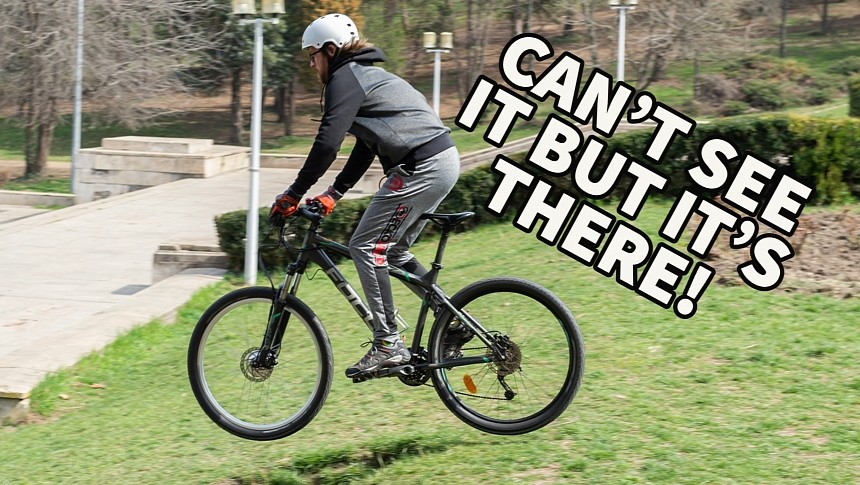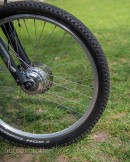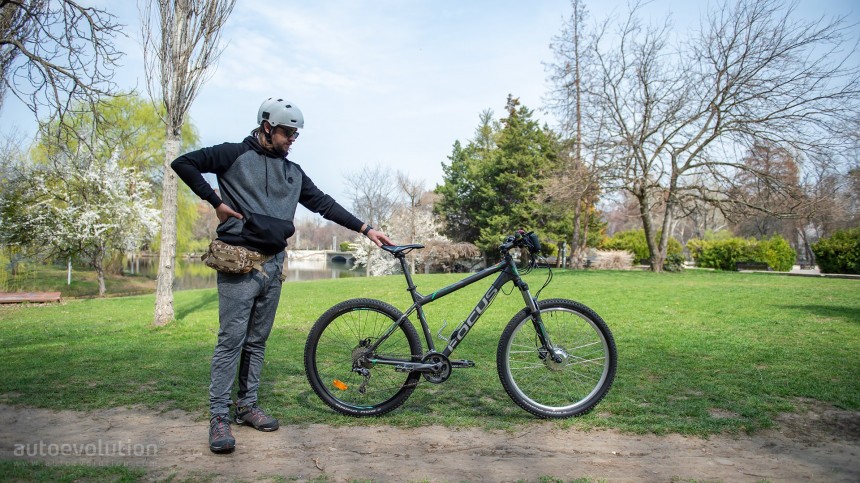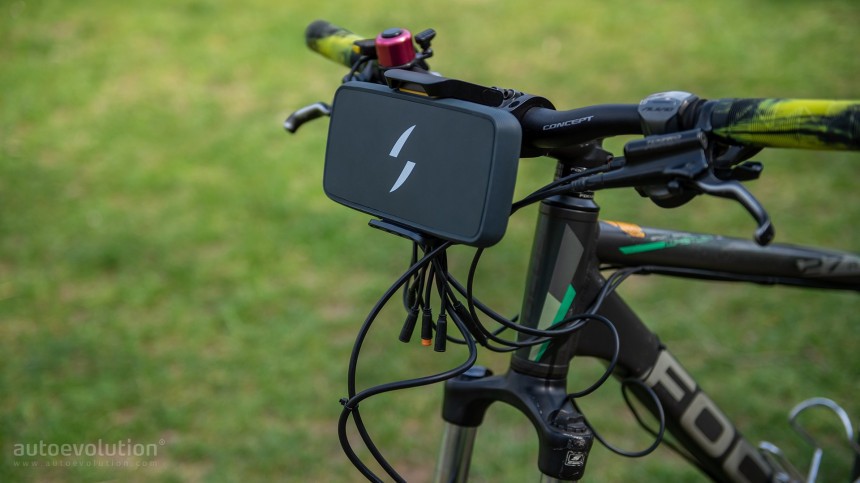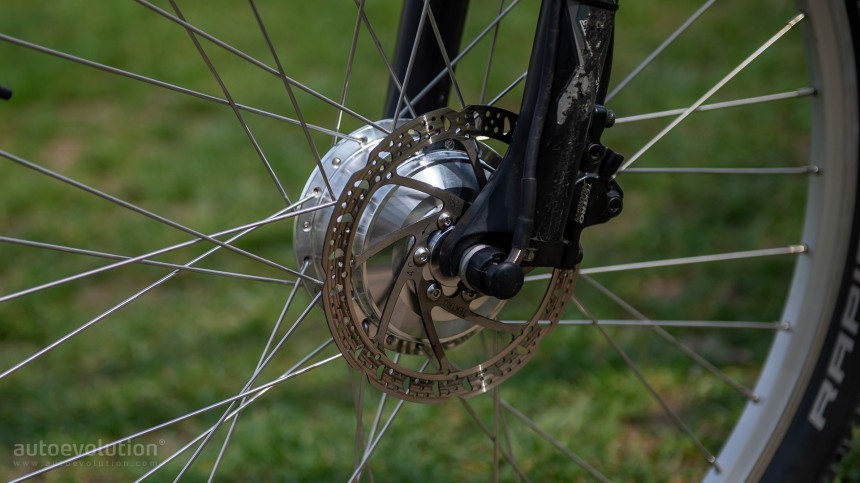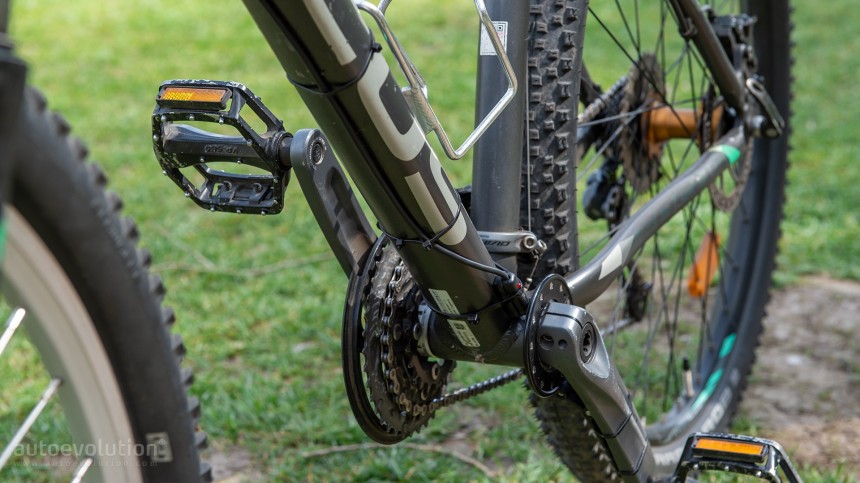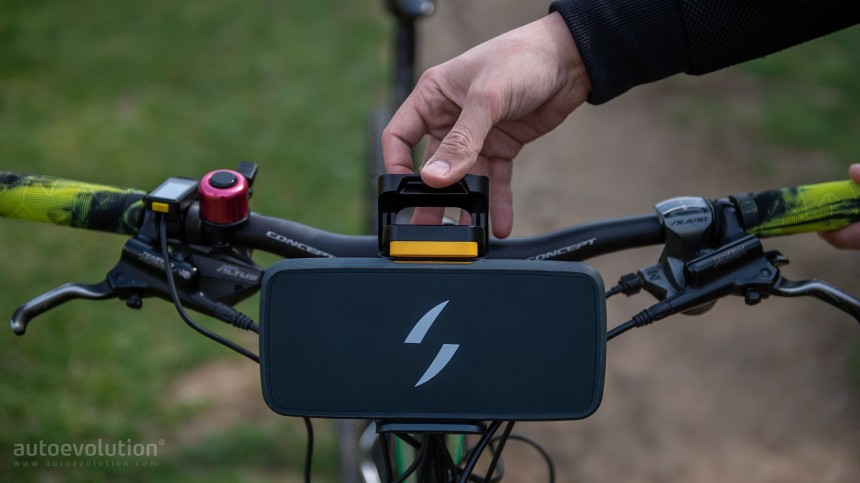Folks, over the past few months, I've been testing the Swytch e-bike conversion kit, and may I say, there is absolutely no need to spend thousands of dollars on a new e-bike to enjoy the magic of electric power. Best of all, you don't even need a new bike! Whip out the old two-wheeler, knock the dust off that seat, and hang on tight for this one.
What you're looking at in the gallery is nothing more than myself, my beat-up and thrashed Focus Whistler with 27.5-in wheels. Most importantly, integrated into the front hub is nothing more than a 250 W motor powered by a handlebar-mounted battery pack or the Swytch e-bike conversion kit, and may I say, this has got to be one of the best alternatives to a costly e-bike that you can get your hands on!
Now, I'm going to skip over the details of my Focus Whistler and stick to the fact that it doesn't matter what sort of bicycle you have; the Swytch kit is available in an array of wheel sizes. From 16 in Brompton wheels to 20 in cruisers, 28 in road bikes, and even 29 in MTB wheels, all can be fitted with this kit. In short, if you have a bike, you can have the same level of fun I do.
Overall, the system is composed of several parts, including a wheel and motor setup, the battery mount, the battery pack, and above all, a pedal cadence sensor, the latter being the key to unlocking unlimited speed. Well, as fast as your gears and legs will take you. In the box, you'll also receive a pat stack of zip ties to ensure wires don't get snagged on existing bike components.
There is something I do want to bring to your attention. Getting this thing onto my Whistler did require a trip down to Service HubWorks, a local shop where putting the kit together by a professional took around 45 minutes to an hour, with small talk and me messing up Radu's (the mechanic) flow. But, once we got the ok that everything was set, it was time to see what Swytch could do, which we'll get to shortly.
From a design perspective, I want to point out just two minor downsides to the setup. The first is that you'll be adding a few extra pounds to your bike, mostly at the front and over the front wheel, and this will affect your ride's geometry and flow but not to the point of no return, as I was still able to grab some airtime with my Whistler while having the kit equipped.
The second downside is the battery mount position. Because it sits on the handlebar, it will definitely clutter your cockpit and even impede some lights or other hardware from being centered properly. The added controller and display take this idea even further. As for the battery pack, it will affect the way your steering behaves, as your bike will become a bit more top-heavy.
But those are just two minor flaws and downsides of the setup. Other than that, the Swytch kit may be the perfect urban companion for getting around town, running errands, and, if you need to, even hitting a singletrack or two on a Saturday morning.
Price aside, there are countless reasons why the Swytch kit needs your attention, but it helps to understand precisely where this system belongs in an urban setting. The reason I say this is mainly because of the kit's range. At this time, two variations are available, 15 km (9 mi) of range or 30 km (18.6 mi). Remember, Swytch is a British brand, and cities are a bit more compact over in Europe. It's this limited range that is sure to keep you using electric power around town.
Still, there's a plus side to this. Because of a short range, and a detachable battery, recharging doesn't take very long, with a full charge on the 15 km pack taking about an hour, sometimes less, if your ride didn't tap all your juice. This is where I was able to truly feel this kit's benefits.
Imagine that you have a 7-15 mi bike ride to work each day. Well, throw on your battery pack, grab the charger and toss it in your bag or backpack, take your bike downstairs or in an elevator (mine fits), and head to work. Sure, you'll get there with batteries completely drained, but in an hour or so, depending on the pack you have, you'll be up and ready to go yet again.
After work, you'll head home, possibly stop for some tea or coffee, and you can recharge the battery once again: most cafes, bars, and restaurants have no problem with you tapping their electric grid for the next leg of your journey - hat tip to Baristro Place for letting us shoot in their cafe. After all, you spend tens of dollars or euros on dinner and drinks. What's a bit of electric power? With your battery now juiced up and ready to go, you'll probably head home. But first, how about a bit of shopping?
And that's a day in the life with a Swytch e-bike kit. However, allow me to point out a bit about why this kit may be one of the best solutions for folks looking for unlimited speed while blasting around on their two-wheeler. Now, if you set up this kit on a single-speed machine or anything without gears, your dreams of unlimited speed may go out the window. One, there's no gearing to allow you to reach lower pedal cadences at higher speeds, so you'll eventually pedal without going any faster.
But, if you own a geared bike like my Whistler, things take on a whole different story. Right now, I'm rocking a Shimano cassette with 9x3 speeds, and without electric assistance, I can cruise around 35 kph (22 mph) on flat terrain. However, once I throw in the Swytch kit, that number is blown out of the water. I can reach speeds of 50 kph (30 mph) or more. I don't know if Radu tampered with the system, or that's just how it works, but the lack of a torque sensor and the presence of just a pedal sensor means that the motor can be tricked into thinking you're struggling and is fed with power as long as you pedal. Remember that whole bit about a Porsche Boxster engine in a Beetle? This is why I used that comparison.
One important question that was on my mind from the very start is how this system changes the dynamics of my MTB. Well, it definitely does, and there are benefits and drawbacks. First of all, there's that added weight to the front of your bike, which will change the way your MTB behaves as you ride uphill. Back down, there are changes too. If you like to jump your MTB, it's definitely going to be harder to lift that front wheel, not impossible, but difficult.
While testing this setup on trails, hitting some airtime, and even stairs, I couldn't help but think that the mount and bracket for the battery would fly open at some point in time, and I'd lose the pack. Well, this never happened, and to find out why, we sat down with Co-Founder Dmitro Khroma to get a clearer picture.
Come to find out, the chances of this bracket ever opening and launching your battery pack into some bushes are zero. Why? This system has been borrowed from a tool often found in a bike shop, mole grips, and once clamped down, "It doesn't let go." It was then tested, on roads, in parks, downhill, and stairs, but above all, in a vibration test machine. The result? "We're very confident in the design." and I highly agree; I had no problems whatsoever with the clamp.
Pros
Cons
Design Evaluation
To understand what's going on with this conversion kit, we need to take a step back and analyze all the parts of the whole. If you're unaware of how an e-bike conversion kit works, think of it as a custom VW Beetle project where you're fitting a Boxster engine: It's a timeless base chassis with the power of modern technology. I say this because the kit uses nothing more than your existing bicycle as a base, but that 'Boxster' engine (the Swytch motor and battery pack) is something else entirely. Oh, and you'll understand why I use this comparison shortly.Now, I'm going to skip over the details of my Focus Whistler and stick to the fact that it doesn't matter what sort of bicycle you have; the Swytch kit is available in an array of wheel sizes. From 16 in Brompton wheels to 20 in cruisers, 28 in road bikes, and even 29 in MTB wheels, all can be fitted with this kit. In short, if you have a bike, you can have the same level of fun I do.
There is something I do want to bring to your attention. Getting this thing onto my Whistler did require a trip down to Service HubWorks, a local shop where putting the kit together by a professional took around 45 minutes to an hour, with small talk and me messing up Radu's (the mechanic) flow. But, once we got the ok that everything was set, it was time to see what Swytch could do, which we'll get to shortly.
From a design perspective, I want to point out just two minor downsides to the setup. The first is that you'll be adding a few extra pounds to your bike, mostly at the front and over the front wheel, and this will affect your ride's geometry and flow but not to the point of no return, as I was still able to grab some airtime with my Whistler while having the kit equipped.
But those are just two minor flaws and downsides of the setup. Other than that, the Swytch kit may be the perfect urban companion for getting around town, running errands, and, if you need to, even hitting a singletrack or two on a Saturday morning.
Real-World Testing
Now, there are a whole bunch of benefits that I've discovered while using such a kit, and the first and foremost is cost. At the time of testing, the Swytch kit was selling for around £1,000, which is roughly $1,300. That's nearly half the cost of your least-expensive e-bike on the market. Secondly, the fun factor of this thing is priceless. You'll understand what I mean.Price aside, there are countless reasons why the Swytch kit needs your attention, but it helps to understand precisely where this system belongs in an urban setting. The reason I say this is mainly because of the kit's range. At this time, two variations are available, 15 km (9 mi) of range or 30 km (18.6 mi). Remember, Swytch is a British brand, and cities are a bit more compact over in Europe. It's this limited range that is sure to keep you using electric power around town.
Imagine that you have a 7-15 mi bike ride to work each day. Well, throw on your battery pack, grab the charger and toss it in your bag or backpack, take your bike downstairs or in an elevator (mine fits), and head to work. Sure, you'll get there with batteries completely drained, but in an hour or so, depending on the pack you have, you'll be up and ready to go yet again.
After work, you'll head home, possibly stop for some tea or coffee, and you can recharge the battery once again: most cafes, bars, and restaurants have no problem with you tapping their electric grid for the next leg of your journey - hat tip to Baristro Place for letting us shoot in their cafe. After all, you spend tens of dollars or euros on dinner and drinks. What's a bit of electric power? With your battery now juiced up and ready to go, you'll probably head home. But first, how about a bit of shopping?
And that's a day in the life with a Swytch e-bike kit. However, allow me to point out a bit about why this kit may be one of the best solutions for folks looking for unlimited speed while blasting around on their two-wheeler. Now, if you set up this kit on a single-speed machine or anything without gears, your dreams of unlimited speed may go out the window. One, there's no gearing to allow you to reach lower pedal cadences at higher speeds, so you'll eventually pedal without going any faster.
One important question that was on my mind from the very start is how this system changes the dynamics of my MTB. Well, it definitely does, and there are benefits and drawbacks. First of all, there's that added weight to the front of your bike, which will change the way your MTB behaves as you ride uphill. Back down, there are changes too. If you like to jump your MTB, it's definitely going to be harder to lift that front wheel, not impossible, but difficult.
While testing this setup on trails, hitting some airtime, and even stairs, I couldn't help but think that the mount and bracket for the battery would fly open at some point in time, and I'd lose the pack. Well, this never happened, and to find out why, we sat down with Co-Founder Dmitro Khroma to get a clearer picture.
Conclusion
At the end of the day, I got to test this kit without having to drop any cash on it; just one benefit of working at autoevolution, but, and this is a big one, if I read a piece of literature such as this, telling me all about how this kit is worth every dollar, even after 200 or so miles, and that I can potentially fly around town like a bat out of hell, assisted by electric goodness, I'd say, "Sign me up!" In short, the Swytch team is onto something here, and this kit has the fun factor, the speed, and the capability to bring you and your bicycle up to modern standards.Pros
- Applicable in an urban setting
- Fits a wide range of bikes
- Affordable
- Capable
- Fun
Cons
- Changes bike geometry
- Cluttered cockpit
- Limited range
